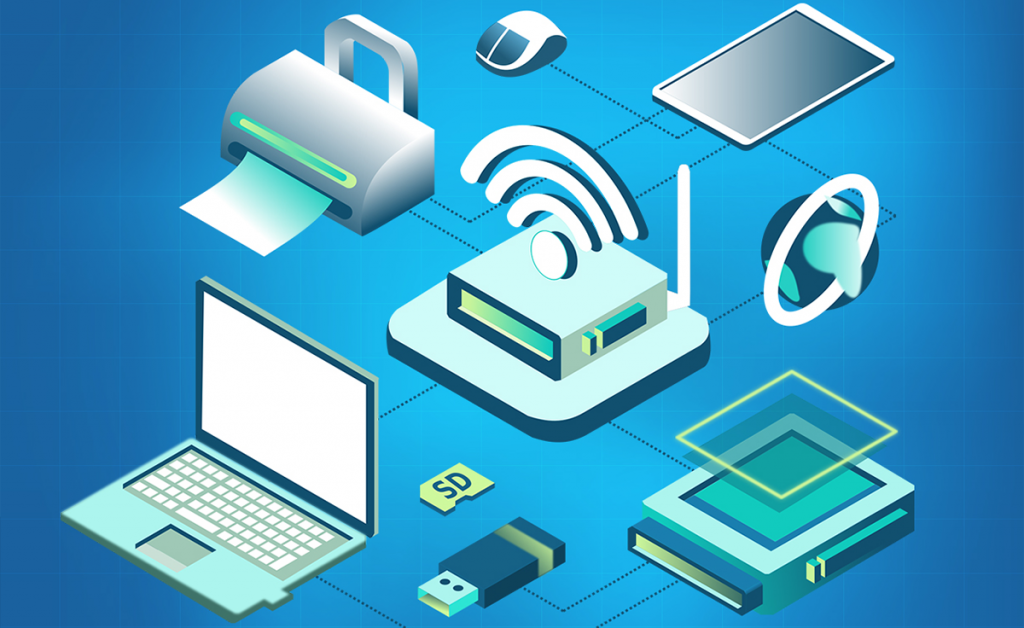
Desktop computers. Laptops. Tablets. Network printers. Routers. Modems. Smartphones. Smart speakers. Media players. Gaming systems. Homes today have many, if not all of these. Each has all sorts of features, and they’d be even more useful if they connected to one another. If only it wasn’t so challenging to get all our devices to relay information between each other reliably.
Home networking can bring so many benefits. You might enjoy:
Yep, all that sounds pretty great, but we’re right back where we started. How do we get our devices to do all that?
What Your Home Network Needs
First, take a moment to imagine connecting all the computers and smart devices in your home via cables. Ack! As if you want more cables snaking around your home! You don’t want to feel as if you’re rooming with Medusa.
So, you’ll be looking into a wireless home network to connect your devices to the internet and each other. That means setting up a modem and a router (we’re assuming you already have an internet service provider).
The modem is what connects your network to the internet. The router connects your devices to each other and to the internet through your modem. The router communicates the wireless signal between your devices and the modem. A gateway option combines the modem and router functions in one device.
If your home is spread out over several floors or square feet, or you have to deal with thick walls, you might have difficulties at home with Wi-Fi dead spots. Great! You’ve made all this effort, and it’s still not working! You could try a mesh network. Instead of making one device do all the signaling, a primary router and many smaller satellites (or nodes) relay the signals with equal power.
Securing Your Home Network
When you get your devices connected, you’ll want to secure your home network. Taking these simple steps helps protect your personal information and prevent cyber attacks.
First, change the default passwords on your modem and router, and choose something more complex than “123456,” “password,” or “letmein.”
You’ll also want to set up a guest network if the router supports it. This allows visitors to access the Wi-Fi without you having to share access to your main network.
Also, rename your Wi-Fi network so that it isn’t obvious that it’s your house. For example, if you live at 920 Hassell Place, you wouldn’t name it 920Hassell. Or, if you’re the Wilsons, don’t name it WilsonNetwork. Don’t make it easy for someone trying to target you to identify which network they are trying to hack.
You like using all your devices, but getting them all networked seems like a headache. Still, once you have a home network set up, you’ll wonder why you waited so long. Don’t put off the convenience any longer. We can help you get all your devices playing together nicely and securely. Contact us today at 931-542-9327!

